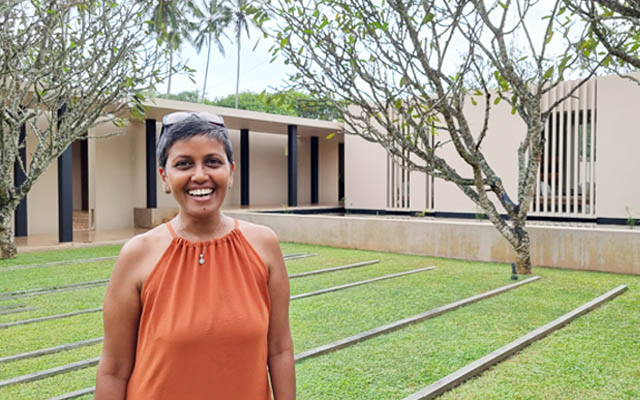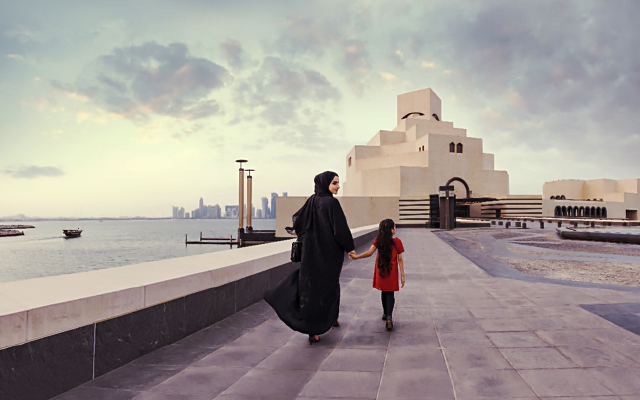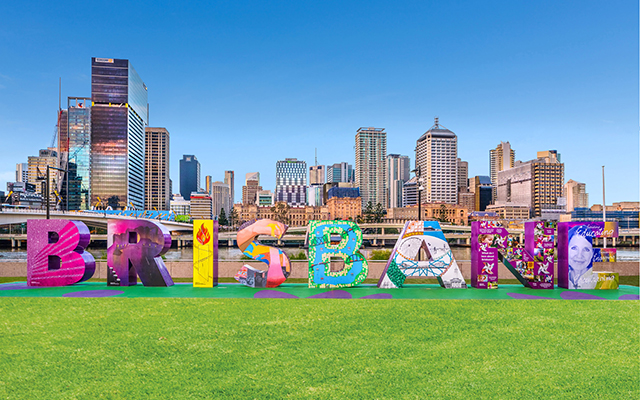Once upon a time, two best friends and avid travellers got married and began building their life’s adventures together by exploring deep into their homeland Sri Lanka. On their trips, they saw that tourist hotspots were overcrowded while stunning but remote places could do with additional income from tourism.
Those observations sparked off the birth of Ayu in the Wild in 2012, a destination specialist that is bent on showcasing the beauty of life in biodiverse Sri Lanka while ensuring that tourism dollars are filtered down to where they matter most – the local people.

“Ayu means life in Sanskrit,” explained co-founder Chamintha Jayasinghe. “There are so many layers to life in Sri Lanka. When a traveller understands what life is really like in a country, he will appreciate it a lot more.”
With Ayu in the Wild carrying its commitment in its name, its travel designers curate trips across the country that deliver authentic experiences led by community-based guides and local topical experts.
“We use a lot of community-based experience hosts in our programmes. These are people who know the destination like the back of their hand. They are village heads, teachers, farmers, housewives, poets, architects and wildlife photographers – everyone we knew through our travels or are our friends for many years. They convey their experience growing up and living in Sri Lanka,” she said.
While travellers benefit from local tales and insights, these community-based experience hosts earn supplementary income without being solely dependent on tourism.
Ayu in the Wild also takes pride in offering naturalists as destination guides. “Because Sri Lanka is a biodiversity hotspot, we found it necessary to also have a naturalist lead our trips. Naturalists have a wider knowledge of culture, heritage, ecology, wildlife and way of life of our people,” remarked Jayasinghe.
The desire to spread tourism earnings deeper into the country influences itineraries crafted by Ayu in the Wild. While Jayasinghe and her tour designers sought to introduce the road less travelled to their customers, some come with specific requests to see the usual hotspots.
“For such clients, we do our best to slip in something unusual. And we realise that it is often those unusual experiences that stick positively with our travellers,” she reflected.
Ayu in the Wild is able to deliver on niche requests, such as an architecture tour of Sri Lanka to see Geoffrey Bawa’s legacies, or to learn about Sri Lanka’s archaeology, nature and conservation, or culture and heritage.
She continued: “Not many people know this, but Sri Lanka’s narrow continental shelf allows nature lovers to sight whales without having to sail far out into the ocean. Many marine mammals are attracted to Sri Lanka because our 103 rivers carry nutrients from the central highlands and across the island to create wholesome feeding grounds.
“There is truly a lot to discover here, and we like to say that Sri Lanka is many countries rolled into one.”
Behind the scenes, Ayu in the Wild’s tourism work supports a much bigger cause – a variety of projects to improve the life of certain segments of the population and protect the environment.
Classroom in the Wild is the agency’s first community initiative, created in 2014 to support a farming village in a remote part of Sigiriya. Trip earnings fund English classes for the children – efforts include sourcing for and paying for an English teacher and language consultant to build the course and conduct lessons. When the pandemic hit, Classroom in the Wild moved lessons online, and provided the children access to learning on their smartphones.
Every year, some 20 to 25 kids from that village benefit from Classroom in the Wild.

Currently, five most promising students from the village receive extra guidance from a consultant teacher. “When we started with these five students, none of them had any ambition. They did not know that a different world existed outside and used to think that they would study up to eighth grade and then work on their parents’ farm. Now, one of them wants to be a nurse, another wants to be an engineer,” Jayasinghe said proudly.
In 2020, Ayu in the Wild started a dance therapy initiative for special needs children in Galle, to provide a safe place for differently-abled children to express their creativity. According to Jayasinghe, medical doctors and physical therapists supporting these children have found that the dance therapy helps with building self-confidence and social skills as well as strengthening their lungs and limbs.
The same initiative is now offered to wards being cared for at a nearby orphanage too.
There are other funding projects with conservationists to protect animal corridors and to remove invasive plants from national parks. New on Jayasinghe’s wish list is a seagrass restoration project that she intends to launch this year. Titled the Ayu Blue Carbon Initiative, the Ayu in the Wild team has identified a one-hectare area in a low-traffic part of Kalpitiya for the pilot programme while a partner marine biologist has drawn up the proposal.
“Seagrass sequesters 10 times more carbon than a rainforest,” she explained, adding that this will be a long-term commitment, with plans to bring the restoration project to a high-tourism zone once it is established.
The Ayu Blue Carbon Initiative will be funded by Ceylon Concierge by Ayu Villa Collection, which caters to VIP clients and high-net-worth (HNW) travellers.
Ceylon Concierge by Ayu Villa Collection will also back yet another new initiative – the Ayu Scholarship Fund which finances further studies for needy children.
Despite more than four years of tourism challenges in Sri Lanka, the founders of Ayu in the Wild have kept these initiatives running – by dipping into their own savings and refraining from drawing a salary.
“Tourism has to return to Sri Lanka quickly. There is only so much our donations can do,” she said, emphasising that it is not just people on the service frontline that are hurting from the country’s battered travel and tourism industry.
When business picks up, Jayasinghe hopes to restart her Sustainable Travel Sri Lanka Initiative, created just before the pandemic, to move hotel partners towards more sustainable operations.
“Given the substantial proportion of trip expenses going to hotels, I feel that the hotel industry needs to plough back more profits for a good purpose. It is not enough for them to just replace plastic water bottles with glass,” she said.
To ensure a more structured approach, she developed a framework to assess hotels’ sustainability achievements and found that some “were doing wonderful things, while some were greenwashing a lot”.
She went on to promote good efforts on Sustainable Travel Sri Lanka Initiative’s Facebook and Instagram platforms, and engaged those properties on other joint projects, such as adopting a school for long-term assistance and getting all staff to be involved. She also wants to engage with hotels to provide better access and greater dignity for mobility-impaired travellers and make Sri Lanka more inclusive for everyone.
“But it is impossible to push these initiatives through with hotels right now because many are in survival mode. Still, Sustainable Travel Sri Lanka Initiative remains a project that I will scale up once I can recruit more staff and specialists.”
For that to happen, Jayasinghe said destination promotions for Sri Lanka must get back on track.
“In better years, during the peak summer season, our guides were booked from July 1 to August 31 on non-stop and overlapping trips. They could not even go home. Right now, (there are) no overlapping trips except during the recent Christmas season. Trips are few and far between. Sri Lanka has not maximised its destination potential because of the lack of promotions,” she lamented.
Her wish is for destination promotions to be led by “professionals who have the best interest of the country at heart, and who will promote Sri Lanka at the level that it should be”.
She felt that the country is focusing too heavily on budget travellers when it is ideal for HNW travellers.
“We have three airports that can handle private jets, and absolutely stunning villas with their own butler teams. There are so many exclusive experiences we can offer at very high prices, and all that tourism money flows into the country. This is also a destination where people can stay in secret if they so wish. Farmers will not recognise any British actresses, I can tell you that much!” she said.
















